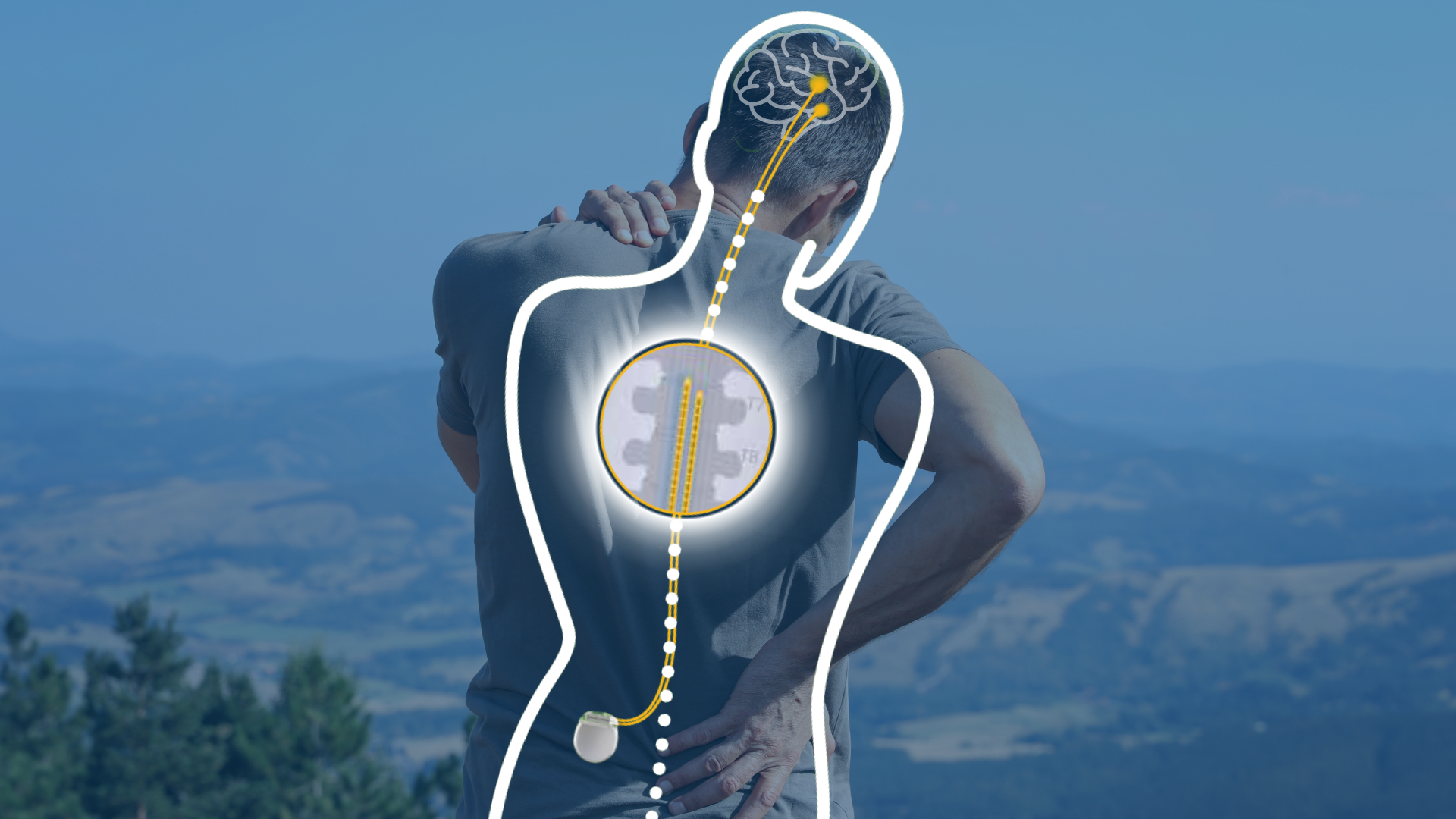 Spinal Cord Stimulation – or SCS for short - is a treatment option for people with chronic pain. Impacting 1 in 5 adults in Europe1, chronic pain is a major health issue of our times. People with chronic pain often experience a significant impact on their quality of life as it can disrupt daily routines and make simple everyday tasks such as cooking, walking and even sleeping difficult. 2 , 3
Spinal Cord Stimulation – or SCS for short - is a treatment option for people with chronic pain. Impacting 1 in 5 adults in Europe1, chronic pain is a major health issue of our times. People with chronic pain often experience a significant impact on their quality of life as it can disrupt daily routines and make simple everyday tasks such as cooking, walking and even sleeping difficult. 2 , 3
We feel the sensation of pain when pain receptors send electrical signals along nerves to the spinal cord and brain – there is an ongoing communication between nerves and brain. What SCS therapy does is masking the pain signals coming from the lower back or legs before they can reach the brain.
In an SCS procedure, insulated wires called leads will be implanted into the spinal cord. These leads are then connected to a small device called a stimulator, which is similar to a pacemaker and sends out mild electrical pulses that travel through the leads to nerves in the back, interrupting the pain signals before the patient can sense them.
Chronic pain is not static and may fluctuate over time. SCS systems can be programmed to deliver different types of therapies. The capability of SCS to be personalised means the therapy can be adjusted over time to achieve optimal symptom relief. Patients can use a remote control to turn the stimulation on and off, increase and decrease the level of stimulation, switch between therapy forms or use multiple therapies at the same time using settings or customised programs. Some of these therapy settings come with paresthesia (a gentle tingling sensation to replace the pain), and other forms without any sensation at all. While with conventional sub-perception therapy it takes time to determine the pain relief, some therapy forms are designed to deliver profound, paresthesia-free pain relief in minutes through precise targeting and proper neural dosing.4
The treatment option that will work best for you depends on your type of pain, how severe it is, and how you respond to pain treatment. Only a doctor can determine if you are a good candidate for various pain treatment options.
Watch this video for more details.
To learn more about chronic pain, watch patient stories, or to find a SCS centre in your area, visit the chronic pain website.
1 Policy Connect. About Chronic Pain. https://www.policyconnect.org.uk/cppc/about-chronic-pain Accessed March 2012.
2 Galluzi. Management of neuropathic pain. Journal of the American Osteopathic Association. 2005;sup 4 (105):S12-S19.
3 NHS Choices. https://www.nhs.uk/news/2016/06June/Pages/Almost-half-of-all-UK-adults-may-be-living-withchronic-pain.aspx. Last accessed: March 2017.
4 Bayerl S., et al. Clinical Outcomes Using A New Fast-Acting Sub-Perception Therapy For Chronic Pain: A Multicenter European Observational Real-World Study [Abstract]. Twenty-Sixth Annual Meeting of the North American Neuromodulation Society, January 12-15, 2023.
This material is for informational Purposes only and not meant for medical diagnosis. This information does not constitute medical or legal advice, and Boston Scientific makes no representation regarding the medical benefits included in this information. Boston Scientific strongly recommends that you consult with your physician on all matters pertaining to your health.
CAUTION: The law restricts these devices to sale by or on the order of a physician. Indications, contraindications, warnings, and instructions for use can be found in the product labelling supplied with each device or at www.IFU-BSCI.com. Products shown for INFORMATION purposes only and may not be approved or for sale in certain countries. This material not intended for use in France. 2023 Copyright © Boston Scientific Corporation or its affiliates.
All rights reserved.
NM- 1763401- AA